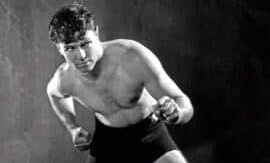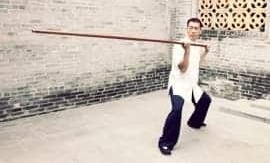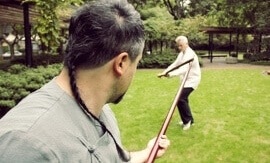
ONE OF THE MOST COMMON FEATURES OF THE WING CHUN SYSTEM, ONE SHARED ACROSS VIRTUALLY ALL LINEAGES, IS THE DRILL OF CHI SAU, COMMONLY REFERRED TO AS “STICKING HANDS” BY MOST PRACTITIONERS.
There are significant differences in the manner in which it is taught and practised, and how Chi Sau is interpreted as part of the overall curriculum of the system from teacher to teacher. Differences can even exist within specific lineages, with senior students under the same teacher often having a different slant on how it should be done and the purpose of its practice.
There are some who say the drill should be done with extreme pressure and force, while others insist it should be light and gentle. Some treat Chi Sau as a form of dynamic combat, akin to free sparring (or as a substitute for it), while others view it as a form of active meditation. Some schools insist that Chi Sau is “the be-all and end-all” for Wing Chun fighting theory, whereas within other schools, the drill is rarely trained and even considered redundant. The extremes are vast and seemingly endless, and each interpretation of Chi Sau is vigorously defended by those who practise it.
In recent times, there has been a movement towards using Chi Sau as a means of competition and as an alternative (or supplement) to sparring contests, and this has divided the Wing Chun community and upset several original students of Grandmaster Ip Man. They see this trend as detrimental to Wing Chun and causing the system to devolve into a far less effective method of combat, into more of a poor man’s version of wrestling. One such “elder statesman” of Wing Chun, on attending such a contest in Hong Kong just months ago, described what he was witnessing as like Sumo wrestling, only to be appalled even further when a younger instructor present replied to his concerns with the comment, “Sumo is good too!”
This is a problem on many levels, mainly because of the trend to treat Wing Chun as a sport or leisure pursuit, instead of remaining true to its roots, where it was developed to learn and maintain effective combat skills. Once it becomes focused on sport and health, it is in danger of becoming a defanged serpent, a harmless, decorative version of what it was designed to be. The recent popularity of the system, created largely by the Ip Man movie franchise, has a lot to answer for in that regard.
Once a system practised by a small, diehard group of serious martial artists in a tiny number of locations around the world, Wing Chun has become “mainstream” and with that has come the influx of people, who really aren’t the “Old School-type” of practitioner, who wants to devote a lifetime to the serious study of the art, but more of the “casual learner-type”, who has taken up the art because it “looks cool” and because they want to replicate the moves their favourite action heroes demonstrate on the small and large screen.
With more people flocking to the system and more people seizing the opportunity to teach as a form of personal income and needing to ensure they keep people coming through their doors, a great deal of Wing Chun has become “watered-down” and modified to be more “family-friendly” in nature. The introduction of variations on traditional drills to make them less aggressive or to make them less complex to learn, understand, or apply has led to many schools teaching far more esoteric interpretations of the system, which are “user-friendly”, but lack the intrinsic combat emphasis upon which Wing Chun gained its reputation.
The fact that, from school to school and lineage to lineage, Wing Chun practitioners can’t even agree on the nature of the Chi Sau or its purpose, means that, even before considering it as a method of contest, there are enormous obstacles to overcome. For a start, if some insist it should be forceful and aggressive, while others insist it should be soft and technical, how can there be agreement on how such a contest is judged? If some insist the participants should roll their arms for a given time and apply specific methods of attack, while others insist they simply need to touch arms, roll once, and then beat the crap out of each other, how can there be any agreement on who is the winner or loser?
Let’s face it; when two people from different schools get together for some “friendly Chi Sau”, how often have we all seen that degenerate into a brawl, because egos and pride got in the way? If we can’t agree on a one-to-one basis like that, how is anyone expected to create and run, let alone judge, such a contest without bias and disagreement? Having seen this happen often, in recent years, the task of creating the “perfect Chi Sau contest” is not achievable. I firmly believe there shouldn’t be Chi Sau contests in the first place!
As my late Sifu, Wong Shun Leung, would say to us time and time again, “If you want to see how good you are as a fighter, don’t bother doing Chi Sau— just fight!” He would insist that Chi Sau was never intended to be a substitute for fighting or an alternative form of sparring. Chi Sau was, as far as he was concerned, a means of developing and testing techniques, structure, reactions, coordination, and timing (just to name a few), within a specific framework that guaranteed such attributes were constantly monitored to ensure accuracy and to detect problems, which could then be targeted for dedicated practice and correction.
It was (and still is) a “perfect laboratory” in which one can test certain attributes under varying levels of pressure and aggression, before taking those ideas out of the relatively controlled environment of Chi Sau and making them work in combat; it is a test track, if you like, to see how your machine is running before you enter the reality of the racetrack. Sure, there was (and is) no real limit to what can be done and/or how; that is left in the hands of those doing the drill. Beginners should practise simpler, less aggressive forms of the drill, commencing with Daan Chi Sau and eventually moving to Gwoh Sau practice, once their skill level has reached a suitable standard, working through many forms of the drill that include both “closed” and “open” variations.
The most important concept of Chi Sau training, as it is taught and practised within the WSL Ving Tsun Kuen Hok syllabus, is it is mutually beneficial to BOTH participants on some levels. If it is abused as a drill by virtue of a more experienced exponent merely beating up on his or her less experienced juniors, what is the point? As the more practised partner, they already know they can overcome their less experienced partner, so simply treating the drill as an ego-boosting beat down serves no function and won’t improve their skills. Worse still, it won’t give their junior partner anything other than a lack of confidence and, eventually, the possibility of a very poor attitude that will be passed on down the line; nobody gains!
Naturally, when two experienced exponents train Chi Sau together, particularly if they engage in Gwoh Sau as opposed to repetitively drilling specific attacking or defensive skills, then they can and should raise the intensity of the drill; that makes sense and will help both improve. But when dealing with a junior classmate, the drill must be done for the mutual improvement of both parties, so pressure and aggression are regulated, with a gradual increase in complexity, speed, power and force being applied. In that way, there is an improvement for all involved and by working with many training partners, one can gradually draw from all of that collective experience, so progress becomes steady and meaningful.
At intervals, sparring drills of various kinds can be introduced, separate from the Chi Sau practice, so skills can then be tested outside of the limitations Chi Sau imposes and more reality-based adaptations of Wing Chun combat theory enhanced. In this way, adaptation becomes more intuitive, and the variations more pronounced, such that the student learns how to apply concepts and reactions, rather than trying to apply set routines and fixed responses; practising Chi Sau as a form of competition totally misses these aspects of the drill and only favours the person who can best fit in with the “rules of engagement” set by the contest. That defeats the goal of the drill and serves no beneficial purpose.
So, in summary, the practice of Chi Sau should best be kept out of the sporting arena and, instead, be used exclusively to learn, develop and enhance key attributes, particularly those of stance, structure, footwork, Chiu Ying and Jui Ying, reactions, sensitivity, speed, and power; those (and several other attributes) are what Chi Sau has always been intended to train. Treating Chi Sau as a form of contest does far more harm to the development of skills than any perceived benefit derived from using it for competition. Do you want to know whether you can fight? Then practise sparring under varying levels of pressure and reality.
Sparring practice of various kinds, and actual fighting, if you are game (not necessarily something either recommended for everyone or desired by everyone; it’s considered illegal and not good for the health if practised too often!) is how one can improve one’s fighting ability. That is NOT the purpose of Chi Sau, no matter how you approach it; form contests, demonstration contests, sparring contests, and so on are great for encouraging students and developing specific skill sets, but Chi Sau is a very unique and very beneficial drill, with specific goals that can enhance many aspects of your Wing Chun skills set; it just isn’t a contest!



















